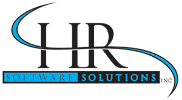This article was originally found on JoshBersin.com – click to read Josh’s post here.
“New research released this week (The Bersin by Deloitte 2015 HR Factbook) shows a 4% year-to-year increase in HR spending in the US in 2014, a significant increase in this $400+ billion marketplace. Between 5-8% of this is spent on tools and technology, approximately half is spent on HR salaries, and the rest is spent on external services, content, and contractors.
There are three significant findings in this research:
First, the significant increase in HR spending shows that businesses are struggling to recruit, retain, engage, and develop their people. Talent is top on the CEO agenda (new research by Conference Board illustrates this) and this puts pressure on HR to drive talent solutions. Our Predictions for 2015 points out these challenges in detail, and the upcoming Deloitte Global Human Capital Trends research will spotlight the global issues in more detail.
Second, spending on HR tools and technology continues to grow. Large companies spend the most on technology (almost 10% of their HR budget), and this increased growth has fueled a huge market growth in cloud-based HR technologies. The entire HR software market is over $10B in size and many segments are growing at double digit rates. (Review Ten Disruptions in HR technology for more on this dynamic marketplace.)
The Talent Management market is now radically changing (read Why the Talent Management Market will Radically Change for more) and venture capital is rapidly flowing into new HR vendors that sell tools for employee engagement, recruitment, learning, and analytics. We expect the HR technology market to grow significantly this year as many of the 10+ year old vendors start to be replaced by agile, easy to use, often mobile applications. When asked about where incremental dollars are going, most HR organizations stated “more money spent on technology and analytics.”
Third, the data shows a huge disparity between well run and poorly run HR teams. We segment HR teams into four levels of maturity: Level 1 (compliance driven), Level 2 (fundamental), Level 3 (Strategic), and Level 4 (Business-Integrated). (Read about the High-Impact HR Organization for more details on the levels.)
Level 4 companies spend almost twice per employee on HR than level 1 companies ($4,434 vs. $2,112 per employee) and they are getting much better business outcomes. Their voluntary turnover rates, for example, are 30% lower than those at Level 1 (8% vs. 11%).
This is a striking difference: these level 4 companies are investing much more heavily in management training, employee development, coaching, productivity programs, and programs to promote wellness and work-life balance. The result is happier employees, lower turnover, and a much stronger employment brand.
(Lists like The Best Places to Work and Great Places to Work clearly show that companies that perform well financially are really rewarding and enjoyable places to work. This comes through a continuous, strategic investment in people.)
Being a great place to work is financially rewarding: it saves millions in recruitment advertising and re-training, it improves productivity and customer service, and it gives your company a sense of pride and soul that customers can experience. We all know what it’s like to do business with companies that don’t treat employees well – we can feel it. This year, as our research clearly shows, is the year to “overinvest” in your people if you want to stay ahead.
The bottom line is simple: the Human Resources function is in the hot seat this year, and those companies who “get it” will outperform those who don’t.
As the labor market continues to heat up and companies shift their focus toward recruitment, engagement, retention, and employee development, HR teams that are well funded and closely aligned with their business leaders will deliver far greater value to the business as the global economy grows.”
